
A Night of Errors is a 1947 detective novel by the British writer Michael Innes. It is the eleventh in his series featuring John Appleby, recently a Detective Inspector in the Metropolitan Police but currently living in an early retirement in the English countryside. It takes the form of a country house mystery with an extremely complex plot, laced with strong elements of farce common throughout the series.

Appleby's End is a 1945 detective novel by the British writer Michael Innes. It is the tenth in his series featuring John Appleby, a young Detective Inspector in the Metropolitan Police. The plot has some similarities to a country house mystery taking part in rural England, but as with much of the author's work this is mixed with a complex plot and a variety of farcical incidents and characters. As is common for novels in the genre, no mention is made of the ongoing Second World War. Taking place over little more than twenty four hours, it ends with Appleby engaged to be married and planning to retire from the police force.
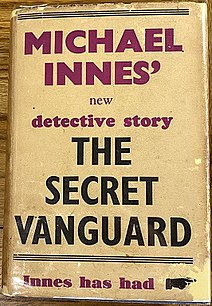
The Secret Vanguard is a 1940 thriller novel by the British writer Michael Innes. It is the fifth in his series featuring John Appleby, a young Detective Inspector in the Metropolitan Police. The novel takes place in the early stages of the Second World War, and functions closer to a mystery spy novel than the traditional detective novel.
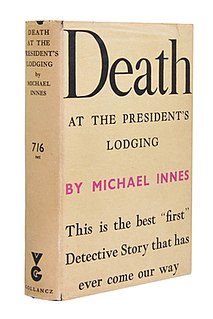
Death at the President's Lodging is a 1936 detective novel by the British writer Michael Innes. It was the first in a series of novels featuring John Appleby, a Detective Inspector in the Metropolitan Police. It is a traditional closed circle of suspects mystery, taking place in a fictitious Oxbridge college located in Bletchley about halfway between Cambridge and Oxford on the Varsity Line. It was released in the United States by Dodd, Mead under the alternative title Seven Suspects.
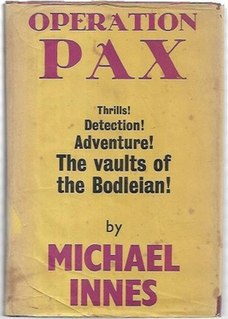
Operation Pax is a 1951 mystery thriller novel by the British writer Michael Innes. It is the twelfth entry in his series featuring John Appleby, a detective in the Metropolitan Police. The novel is thematically a thriller rather than the traditional Golden Age of Detective Fiction murder investigation that features in most of the series. As with other books in the series a farcical tone is often maintained. It was released in the United States under the alternative title The Paper Thunderbolt.

Hare Sitting Up is a 1959 mystery thriller novel by the British writer Michael Innes. It is the sixteenth entry in his series featuring John Appleby, a detective with the Metropolitan Police. It is set against the backdrop of the Cold War. The title is taken from a quote from D.H. Lawrence's novel Women in Love. Reference is also made to the 1950 British film Seven Days to Noon.
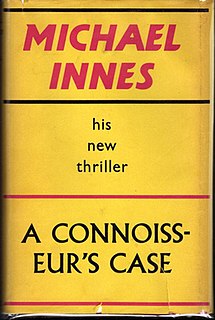
A Connoisseur's Case is a 1962 detective novel by the British writer Michael Innes. It is the eighteenth in his series featuring John Appleby of Scotland Yard. It is a country house mystery, harking back to the Golden Age of Detective Fiction. It was released in the United States by Dodd, Mead under the alternative title The Crabtree Affair.
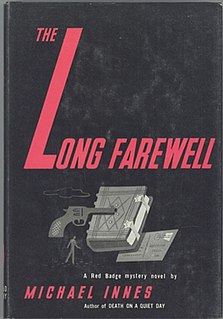
The Long Farewell is a 1958 detective novel by the British writer Michael Innes. It is the fifteenth novel in his series featuring John Appleby, a senior detective with the Metropolitan Police. The title refers to a quote from Cardinal Wolsey in William Shakespeare's Henry VIII.

Appleby Talking is a collection of detective short stories by the British writer Michael Innes published in 1954. John Appleby, a Golden Age Scotland Yard detective, features in all twenty three stories. The series of novels had run since Death at the President's Lodging in 1936, but this was the first time shorter stories about Appleby's cases had been collected in a single volume. It was followed by a second collection Appleby Talks Again in 1956. It was published in the United States under the alternative title Dead Man's Shoes.
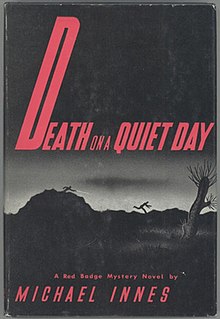
Appleby Plays Chicken is a 1957 detective novel by the British writer Michael Innes. It is the fourteenth novel in the long-running series by Innes featuring John Appleby, a senior detective with the Metropolitan Police. It blends the traditional Golden Age detective story with a mystery spy thriller plot. It was published in the United States under the alternative title Death on a Quiet Day.

Lament for a Maker is a 1938 detective novel by the British writer Michael Innes. It is the third in his series featuring John Appleby, a young Detective Inspector in the Metropolitan Police. It was published during the Golden Age of Detective Fiction. The title refers to the Lament for the Makaris by the Scottish poet William Dunbar, which is constantly recited by one of the characters. The novel features a string of first person narratives of the events that takes place, which each character drawing a conclusion that builds on and also corrects the previous writer.
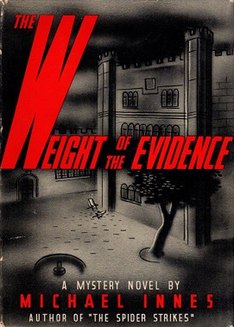
The Weight of the Evidence is a 1943 detective novel by the British writer Michael Innes. It is the ninth in his series featuring John Appleby, a young Detective Inspector in the Metropolitan Police. It was first published in America with the British release not taking place until the following year. It was published during the Golden Age of Detective Fiction. Although written during the Second World War, it is set in the pre-war era. Like a number of Golden Age mysteries including several by Innes it uses a university background, but in this case it switches from the usual Oxbridge setting to a newer Northern institution.
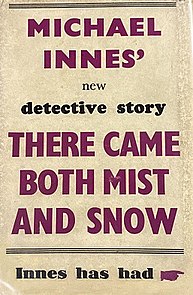
There Came Both Mist and Snow is a 1940 detective novel by the British writer Michael Innes. It is the sixth in his series featuring John Appleby, a Detective Inspector in the Metropolitan Police. The title is a reference to a line from The Rime of the Ancient Mariner by Samuel Taylor Coleridge. It is a country house mystery told in a first person narrative by Arthur Ferryman, one of the guests at a family gathering and witness to the events. It makes no mention of the ongoing Second World War. It was published in the United States by Dodd, Mead under the alternative title A Comedy of Terrors.
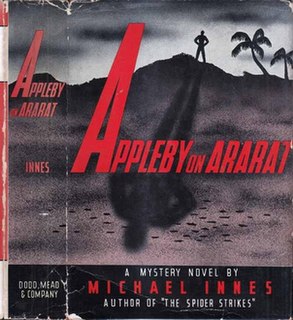
Appleby on Ararat is a 1941 mystery thriller novel by the British writer Michael Innes. It is the seventh in his series featuring John Appleby, a Detective Inspector in the Metropolitan Police. Set during the Second World War the plot takes place on an island in the South Pacific. It was described by his biographer as "in every way Innes's most exotic production".

Appleby at Allington is a 1968 detective novel by the British writer Michael Innes. It is the twentieth in his long-running series featuring Sir John Appleby of Scotland Yard, now retired. It takes the form of a Golden Age country house mystery with elements of farce. It was released in the United States by Dodd, Mead under the alternative title Death by Water.

The Bloody Wood is a 1966 detective novel by the British writer Michael Innes. It is the nineteenth in his long-running series featuring Sir John Appleby of Scotland Yard. It takes the form of a Golden Age-style country house mystery.

The New Sonia Wayward is a 1960 thriller novel by the British writer Michael Innes. It was published in the United States by Dodd, Mead under the alternative title The Case of Sonia Wayward. It is an inverted detective story with comedy elements, with the focus on the murderous protagonist. It was one of several standalone novels by Innes, who was best known for his series featuring the Golden Age detective John Appleby. Maurice Richardson writing in The Observer felt it "rather light for a suspense story but most pleasingly written."

The Z Murders is a 1932 mystery crime novel by the British writer Joseph Jefferson Farjeon. It was originally published by Collins Crime Club, and in 2015 was reissued by the British Library Publishing as part of a group of republished crime novels from the Golden Age of Detective Fiction.

The Man from the Sea is a 1955 thriller novel by the British writer Michael Innes. It was published in the United States by Dodd, Mead. It was a standalone novel from Innes who was best known for his series featuring Golden Age detective John Appleby. It was published in paperback by Avon under the alternative title Death by Moonlight.
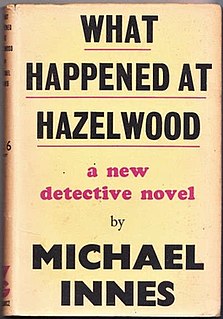
What Happened at Hazelwood is a 1946 detective novel by the British writer Michael Innes. It is a standalone novel from the author who was best known for his series featuring the Golden Age detective John Appleby. In this novel his role is fulfilled by Inspector Cadover who also appeared later in an Appleby novel A Private View.




















